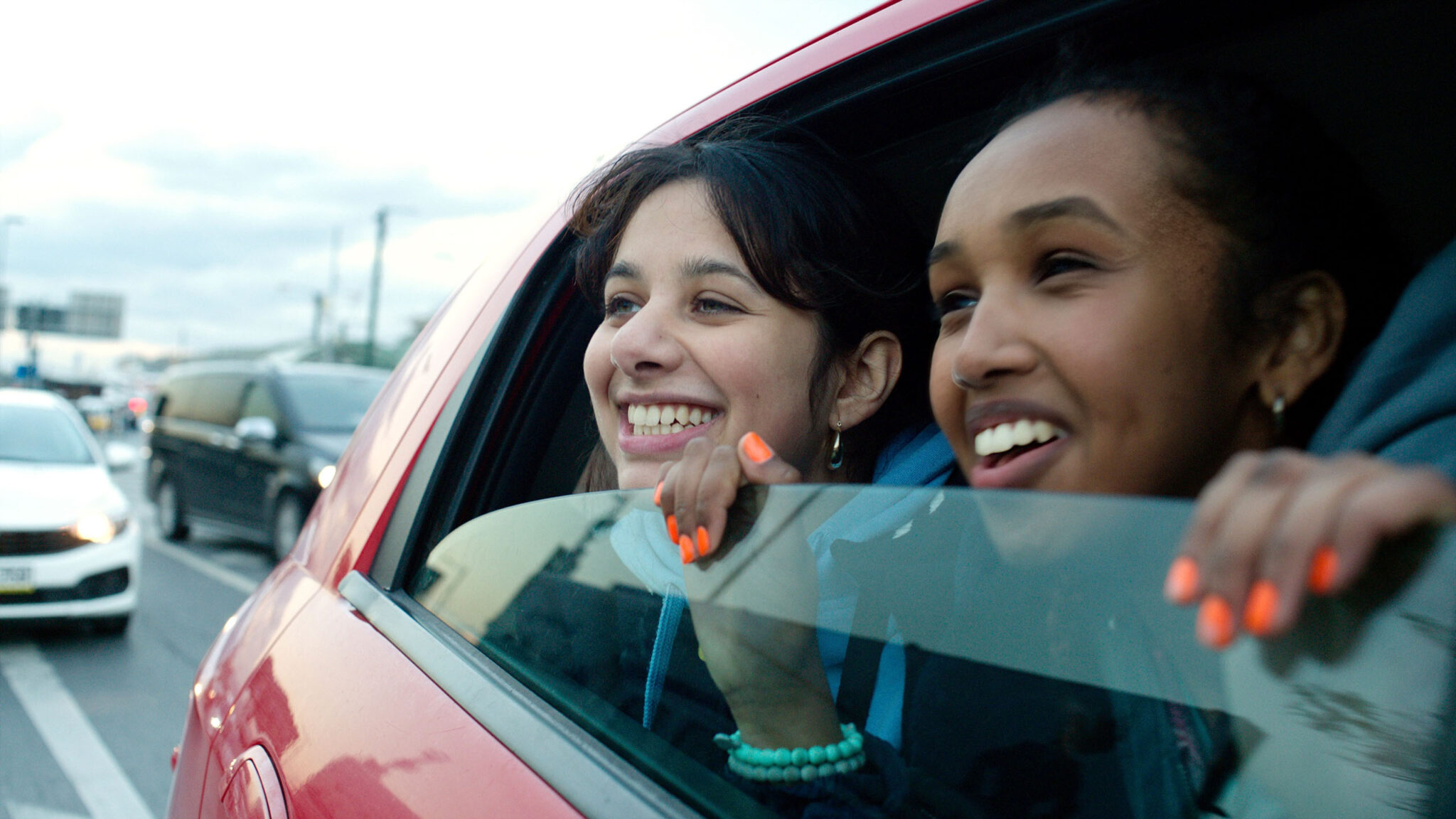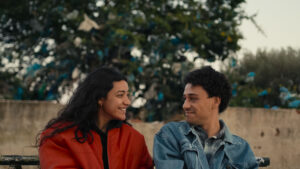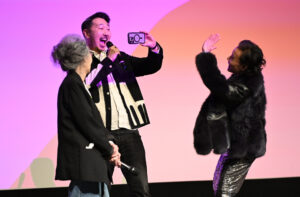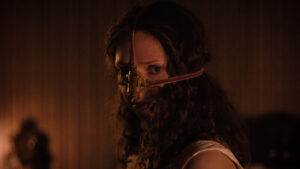By Lucy Spicer
One of the most exciting things about the Sundance Film Festival is having a front-row seat for the bright future of independent filmmaking. While we can learn a lot about the filmmakers from the 2025 Sundance Film Festival through the art that these storytellers share with us, there’s always more we can learn about them as people. We decided to get to the bottom of those artistic wells with our ongoing series: Give Me the Backstory!
“I do think all storytelling is about evoking the act of empathy,” says filmmaker Nadia Fall. “I really do think of empathy as a muscle we all need to exercise to feel more connected to each other and ultimately less alone.” In Brides, Fall’s feature directorial debut, teenage Doe (Ebada Hassan) and Muna (Safiyya Ingar) set out on a journey from England to Syria in search of community and belonging — things they are desperately missing back home, where troubled family life, sexism, and Islamophobia have left the best friends feeling isolated.
Fall’s film, which premiered in the World Cinema Dramatic Competition at the 2025 Sundance Film Festival, is a friendship-focused road movie that invites audiences to empathize with its adolescent protagonists rather than judging them for having been steered toward extremism. Even as we take in flashbacks of unhappy girlhood and attempt to tamp down our nerves about this trip’s outcome, we also see Doe and Muna just being teenagers, playing games and eating junk food and navigating various travel snafus.
“I wanted to tell this [story] so that the audience could recognize these girls — that they could be your niece, sister, daughter, best friend, and not just ‘the radicalized’ other out there somewhere,” says Fall. “I also hope it survives as a tender study of teenage friendship, reminiscent of those deep platonic love stories of adolescence where we would die for our best friends. I hope it serves as an allegory, asking what happens to young people when they are othered and don’t feel like they belong.”
Read on to learn more about Brides and its director, including Fall’s approach to portraying youth and the real-life events that inspired her debut feature.
What was the biggest inspiration behind Brides?
The biggest inspiration for Brides, and in fact a lot of my work, has been telling the stories of young people from their perspective, especially those on the margins that seem to be written off by society, outsiders in some way. Those heady and electric teenage years fascinate me, when love and loss is felt so damned deeply and our brains are literally hardwired to make impulsive and dangerous decisions, consequences be damned. It’s a wonder any of us survive our youth! I spent a lot of my early career working with young people in various settings from youth offending facilities to hostels and in psychiatric wards and pupil referral units. I noticed that however tough life got, and boy was it tough for some of those young people, I found them to be full of hopes and dreams for a future despite their circumstances.
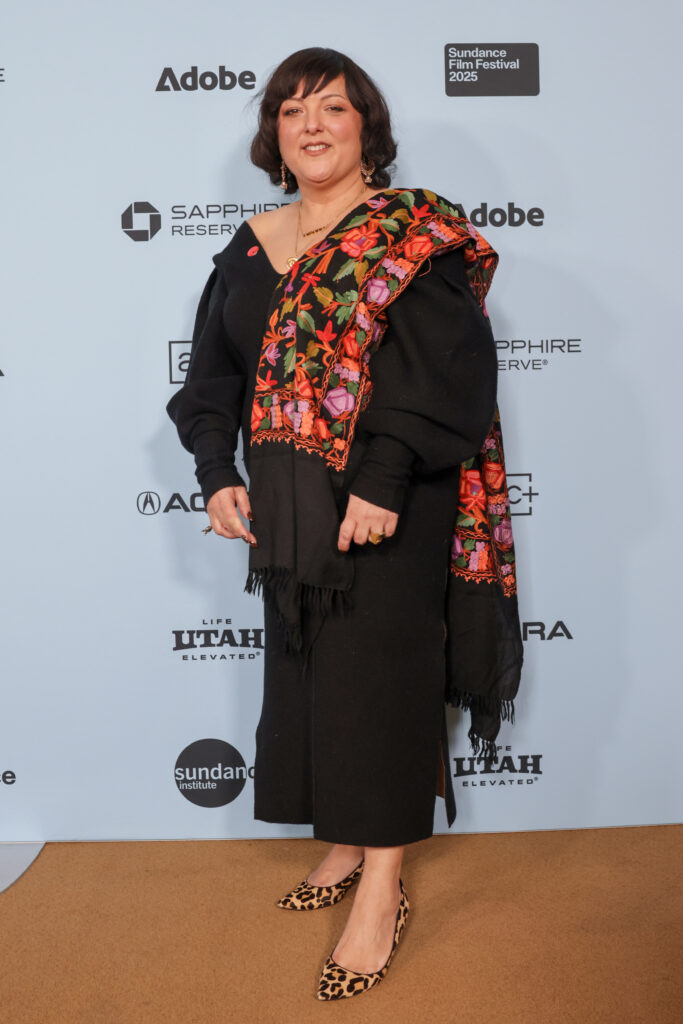
Yet when it came to incidents in my city — the London riots, for example, or the real-life case of the young women from East London that left school one day to make a fateful journey across Europe to Syria to join ISIS — there was no attempt to understand them. They were vilified in the British press as outright monsters. In the much-publicized case of Shamima Begum, she was stripped of her British citizenship and has not been allowed to reenter the country, even to face a trial, despite being only 15 years old when she left, still a child.
To be honest, at first [screenwriter] Suhayla El-Bushra and I were reluctant to tell this particular story. Both being of Muslim heritage, we knew how politically loaded the topic is. But ultimately we knew this story was burning to be told, and in the end we thought if anyone was going to do it, it had better be us and it had better be through the eyes of the young protagonists.
Describe who you want this film to reach.
Of course, I want Brides to reach as far and wide as possible and to provoke questions, conversations, and an emotional tug for mainstream audiences who might not have otherwise considered this story and this perspective.
But I can also imagine how it would have blown the mind of my 15-year-old self to see teenage protagonists that looked like me and my friends. So, I am particularly excited to reach young audiences and especially those from the global majority.
What was a big challenge you faced while making Brides?
Shooting in three countries — Wales, Turkey, and Italy — with three different teams, languages, and cultures was quite ambitious for a first feature, or so I’m told! I’ve got to say I was blissfully naïve, as I had nothing to compare it to. And though it was tough to uproot and re-set up camp just as you were catching your stride in each location, I think our film has been a truly international collaboration and is all the richer for it.
Why does this story need to be told now?
Though Brides is set in 2014, the conflicts and wars gripping our planet by the throat have only spread and grown today. And the pain, suffering, and horror is being livestreamed to our phones all day every day, and, of course, young people are consuming this too. I feel it is imperative for us to congregate in this moment of division and tell and share a range of stories, especially nuanced and complex ones that include those from a Muslim diaspora. We need these narratives right now, told with light and shade, to remember we have more in common than we have differences and as an urgent reminder that all the children are our children.
If you weren’t a filmmaker, what would you be doing?
If I wasn’t a filmmaker, I would certainly still be a storyteller, making theater as I do now and most likely daydreaming about making a film! I have run a 140-year-old theater, Theatre Royal Stratford East in the East end of London, for seven years and am just about to take over as the new artistic director of the renowned Young Vic Theatre. I can’t imagine a world where I wasn’t making art; it’s not a choice, really, but a compulsion of sorts. So I can see a parallel universe where I might be selling some French cheese on a market stall yet still spinning a yarn, ever the incorrigible raconteur.
Who are your creative heroes?
A very hard question: actor Lesley Manville because I believe every word she utters, playwright August Wilson because I can hear jazz music in his words, Caravaggio for the light, James Baldwin for speaking truth to power, and Prince for the music.
What three things do you always have in your refrigerator?
Greek yogurt, hummus, and some sorry vegetables sadly on the turn (but that I haven’t the heart to throw out. Maybe I’ll make a soup. Who am I kidding?!).
What was the last thing you saw that you wish you made?
The Zone of Interest for its originality of vision. Powerfully capturing the banality of human depravity without an ounce of pain porn.
One thing people don’t know about me is _____.
I went to a school run by Carmelite nuns in Kuwait City.
Tell us about your history with Sundance Institute. When was the first time you engaged with us? Why did you want your film to premiere with us?
We applied to the Sundance Institute Screenwriters Lab with Brides in 2021. We made the shortlist, but I was gutted when we didn’t finally get a place. I wanted the film to premiere at the Sundance Film Festival because it has the best reputation for launching new filmmakers both with care and with flair. That’s the approach our team has taken in the making this film, and that’s how I want it to arrive in the world.
What’s your favorite film that has come from the Sundance Institute or Festival?
I have loved and grown up with so many iconic Sundance films. It is impossible to choose just one, but certainly the film that was a great inspiration for Brides was Eliza Hittman’s Never Rarely Sometimes Always (2020) with its beautifully intimate cinematography from Hélène Louvart. For me, it was a master class in economical storytelling; it was so held and achingly subtle until it delivered its ultimate gut punch. And it captured what it is to be a teenage girl with such an astonishing precision.




